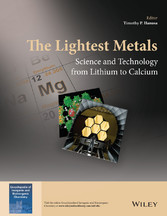Suche
Lesesoftware
Info / Kontakt
The Lightest Metals - Science and Technology from Lithium to Calcium
von: Timothy P. Hanusa
Wiley, 2015
ISBN: 9781118751435 , 496 Seiten
Format: PDF, Online Lesen
Kopierschutz: DRM



Preis: 148,99 EUR
eBook anfordern 





